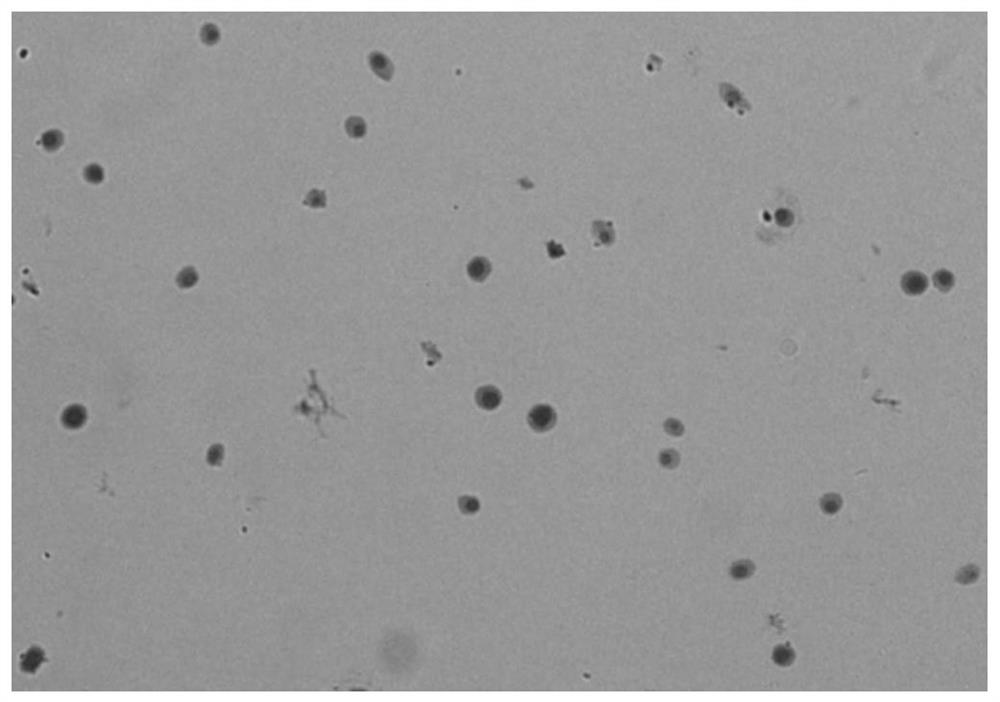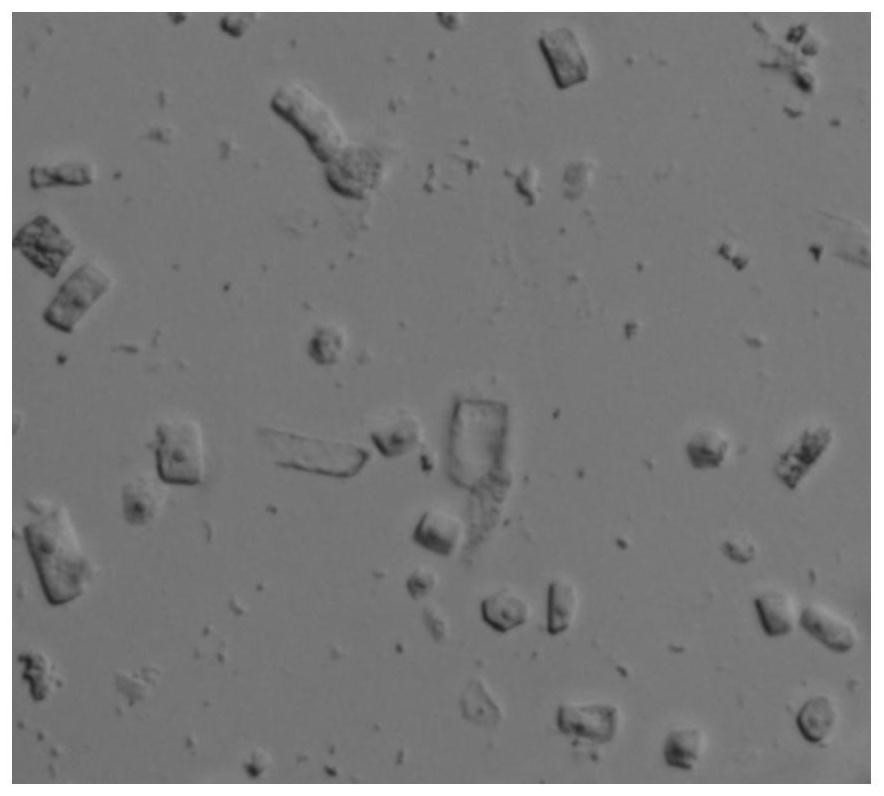Lysate for extracting plant cell nucleus
A lysate and cell nucleus technology, which is used in the extraction of plant cell nucleus and the lysate field of plant ATAC-seq experiments. It can solve the problems of different tissue characteristics and inappropriate plant cell nucleus extraction, and achieve the effect of complete nuclear membrane and high sequencing quality.
- Summary
- Abstract
- Description
- Claims
- Application Information
AI Technical Summary
Problems solved by technology
Method used
Image
Examples
Embodiment 1
[0050] Example 1 Carry out rice root tip nucleus extraction with the lysate developed by the present invention
[0051] 1. Purpose of the experiment
[0052] Test the effect of the lysate provided by the invention in extracting rice root tip nuclei.
[0053] 2. Experimental materials
[0054] 1, paddy rice root tip (comprising radicle and crown root), is cultivated according to the following method:
[0055] The rice seeds were germinated at 37°C for 2 days, planted, 14 hours of darkness, 10 hours of light, and the light intensity was 10,000lx. (When the radicle needs to be cultivated, it is cultivated for 3 days; if it is necessary to obtain crown roots, it is cultivated for 6 days). The culture medium is Hogland nutrient solution. After the rice root grows, a 5mm part of the root tip is taken for cell nucleus extraction.
[0056] 2. Lysis solution
[0057] First prepare the base solution according to Table 1
[0058] Table 1 The amount of each component in the base flu...
Embodiment 2
[0106] Example 2 Use the lysate developed by the present invention to extract rice root tip nuclei under stress conditions (this example is heat stress)
[0107] 1. Purpose of the experiment
[0108] The lysate extracted from rice cell nuclei under different stress conditions (such as heat stress, cold stress, salt stress, drought stress, etc.) was developed.
[0109] The heat-stressed rice root tip lysate developed by the present invention is tested for the effect of extracting heat-stressed rice root tip nuclei.
[0110] 2. Experimental materials
[0111] 1, paddy rice root tip (comprising radicle and crown root), is cultivated according to the following method:
[0112] The rice seeds were germinated at 37°C for 2 days, planted at 10:00, 14 hours of darkness, 10 hours of light, and the light intensity was 10,000lx. (When the radicle needs to be cultivated, it is cultivated for 3 days; if it is necessary to obtain crown roots, it is cultivated for 6 days), The culture med...
Embodiment 3
[0128] Example 3 Use the lysate developed by the present invention to extract the nuclei of other rice tissues
[0129] 1. Purpose of the experiment
[0130] Preparation of lysates for cell nuclei extraction from different rice tissues.
[0131] The effect of extracting rice young panicle nuclei by the rice young panicle lysate developed by the present invention was tested.
[0132] 2. Experimental materials
[0133] 1. The young ears of rice are cultivated according to the following methods:
[0134] The rice seeds were planted in an outdoor field in Beijing in May, and when the young panicle grew to 0.5-1 cm long, it was taken out for cell nucleus extraction.
[0135] 2. Lysis solution
[0136] First prepare the base solution according to Table 3
[0137] Table 3 The dosage of each component in the base fluid
[0138]
[0139] Base liquid preparation method:
[0140] Add enzyme-free sterile water to the centrifuge tube first, and then add the ingredients in the abo...
PUM
 Login to View More
Login to View More Abstract
Description
Claims
Application Information
 Login to View More
Login to View More - R&D
- Intellectual Property
- Life Sciences
- Materials
- Tech Scout
- Unparalleled Data Quality
- Higher Quality Content
- 60% Fewer Hallucinations
Browse by: Latest US Patents, China's latest patents, Technical Efficacy Thesaurus, Application Domain, Technology Topic, Popular Technical Reports.
© 2025 PatSnap. All rights reserved.Legal|Privacy policy|Modern Slavery Act Transparency Statement|Sitemap|About US| Contact US: help@patsnap.com



